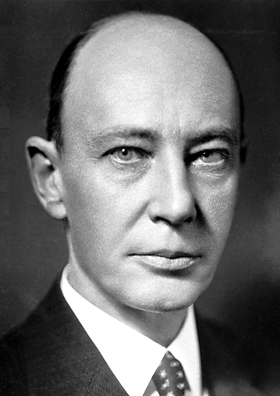<Back to Index>
- Physician George Richards Minot, 1885
- Poet Francis Jammes, 1868
- Conquistador Hernán Cortés de Monroy y Pizarro, 1485
PAGE SPONSOR

George Richards Minot (December 2, 1885 – February 12, 1950) was an American medical researcher who shared the 1934 Nobel Prize with George Hoyt Whipple and William P. Murphy for their pioneering work on pernicious anemia.
George Richards Minot was born in Boston, Massachusetts. He came from a medical family; his father was physician James Jackson Minot (1853 – 1938). One of his great - grandfathers was James Jackson (1777 – 1867), co-founder of Massachusetts General Hospital. He was namesake of his great - great - grandfather George Richards Minot (1758 – 1802). His mother was Elizabeth Whitney. His father's cousin was anatomist Charles Sedgwick Minot (1852 – 1914).
He completed his A.B. in 1908 and his M.D. in 1912 from Harvard University. Between 1914 to 1915, George Minot was appointed Assistant in Medicine at the Johns Hopkins University in Baltimore, MD. In 1915, he was appointed Assistant in Medicine at the Harvard Medical School. Minot won the 1934 Nobel Prize in Physiology or Medicine with William P. Murphy and George H. Whipple for their work in the study of anemia. George Minot, working with William Murphy, described an effective treatment for pernicious anemia with liver (which is high in vitamin B12.)